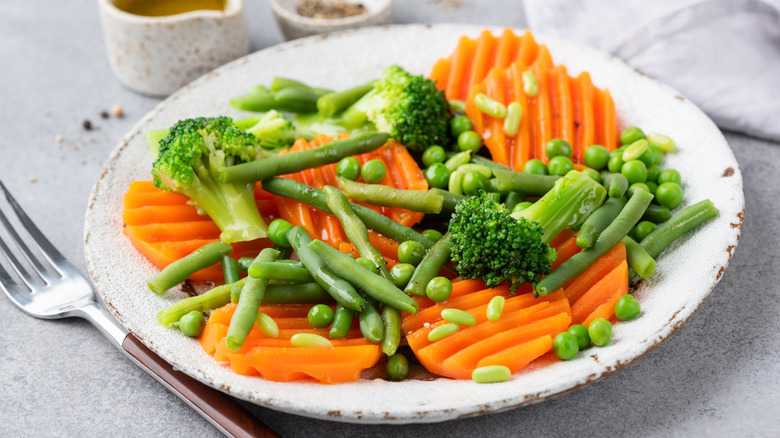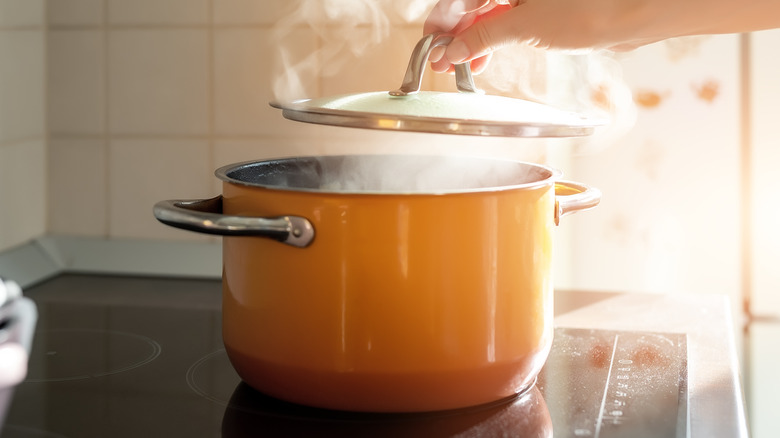The Secret To Better Boiled Vegetables? Cook With The Lid On
Boiled vegetables are too often synonymous with bland and mushy chunks pushed to the edge of a plate. If you've ever had to force yourself to scarf down overcooked vegetables with zero flavor, you have our sympathies (and a few tips you need when cooking with vegetables, so you never have to live through that agonizing experience again). One of the main rules for boiling veggies is to keep the lid on as they cook. It's a simple trick to ensure your vegetables cook to textural perfection and retain the flavor of any seasoning added to the water.
Using this technique, there's no need to add a lot of water to the pot — you want it just slightly below the top of your veggies. When cooking vegetables that grow below the ground, place them in cold water and then bring to a boil. Vegetables that grow above the ground, however, should be added to the pot once the water is already boiling. You can (and should) infuse the water with spices and aromatics to bring good flavor to the forefront. Salt, garlic, and herbs are all great options, but a simple bouillon cube will also do the job.
As the veggies are boiling, the lid prevents steam from escaping. The steam is needed to properly cook the vegetables; that's why we want to keep it inside the pot. Trapping the steam also means securing the added flavors, which would otherwise evaporate along with the steam, leaving behind bland-tasting vegetables.
Dunk the veggies into an ice bath to stop the cooking process once they're done
Vegetables are notoriously easy to overcook, so pay attention to their doneness and do a taste test before you take all of them out of the water. You'll know they're done when the texture is soft but still has a gentle bite. That's when you need to stop the cooking process by dunking the veggies into an ice bath or running them under cold water. If you simply transfer them from the boiling water onto a plate, they'll continue (over)cooking. Cooling them off right after boiling will also help preserve their vibrant color, giving them a tastier appearance. We eat with our eyes first, after all.
There is one important exception to the "keep the lid on" rule, though. Leafy greens (such as chard and spinach) need to cook in a lot of water and an uncovered pot. They are more delicate, need more space, and also have a significantly shorter cooking time.
When your choice of vegetables is perfectly and flavorfully cooked, save the cooking water. It has a ton of flavor! Repurpose it as delicious veggie stock in risottos and pasta dishes or (a tip for cozy autumn evenings) use it as the base for a creamy, pureed veggie soup.

